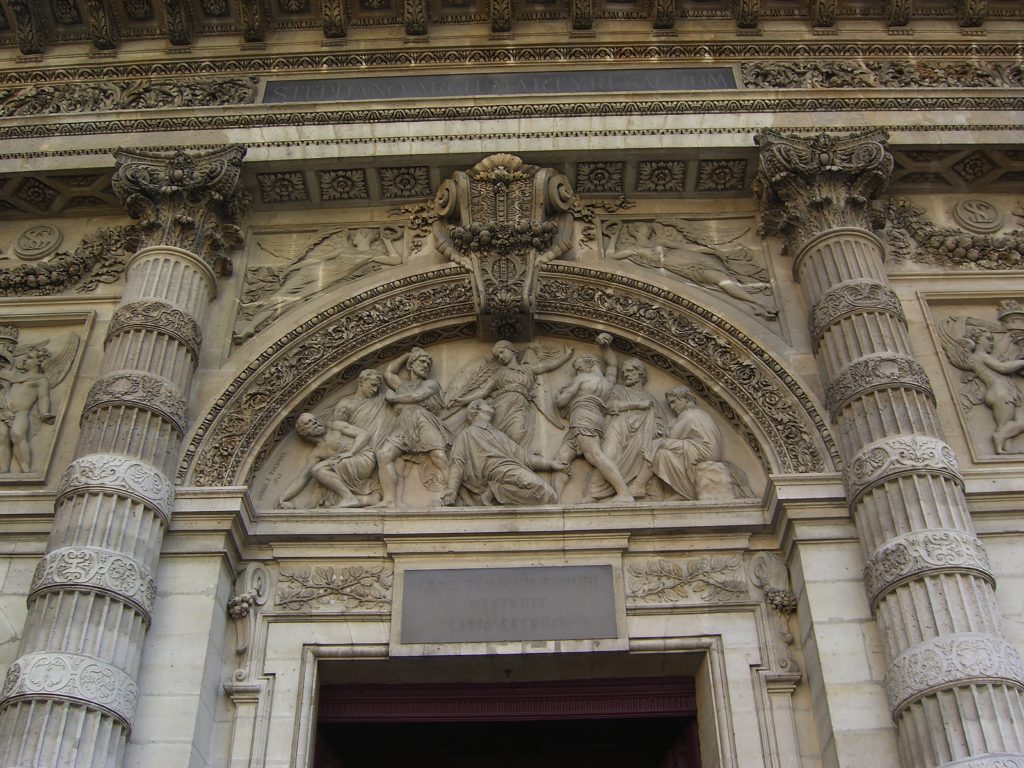The wren, the wren, the king of all birds,
St. Stephen’s Day was caught in the furze,
Although he was little his honour was great,
Jump up me lads and give him a treat.
—”The Wren“
Of course, in Ireland and like parts, the “king of all birds” was singled out for some rough treatment the day after Christmas. A somewhat sanitized version of the song, on The Chieftain’s “Bells of Dublin” album, alludes to the death of the wren, but doesn’t explain how it came to expire. Liam Clancy’s much earlier recording of a traditional number, “The Wran Song,” doesn’t leave much doubt about what had happened to the bird: “I met a wren upon the wall/Up with me wattle and knocked him down.” In fact, if you’re inclined to explore further the Irish (and fellow Celts’) Christmastime wren customs, here’s a book for you, “Hunting the Wren: Transformation of Bird to Symbol.”
A brief passage on the traditions of the wren hunt: “Typically, on the appointed ‘wren day’ a group of boys and men went out armed with sticks, beating the hedges from both sides and throwing clubs or other objects at the wren whenever it appeared. Eyewitnesses described the hunting of the wren in Ireland in the 1840s:
For some weeks preceding Christmas, crowds of village boys may be seen peering into hedges in search of the tiny wren; and when one is discovered the whole assemble and give eager chase to, until they have slain the little bird. In the hunt the utmost excitement prevails, shouting, screeching, and rushing; all sorts of missiles are flung at the puny mark and not infrequently they light upon the head of some less innocent being. From bush to bush, from hedge to hedge is the wren pursued and bagged with as much pride and pleasure as the cock of the woods by more ambitious sportsmen.”
And why is the wren “the king”? According to the book above, the appellation goes back to a fable apparently current in several cultures and in Greece and Roman tradition ascribed to Aesop: various birds vied with the eagle for the title of the king of birds. One by one, the eagle out-soared them. But the wren–the wren concealed itself in the eagle’s feathers, and as it sensed the eagle was tiring, flew up and away, farther than the eagle could reach.
But enough of the wren. I really want to talk about December 26, also known as Boxing Day (what’s that about? Here’s a rather tart view from early 19th century London) and St. Stephen’s Day. The latter is of special note for me, since my dad’s first name, and mine, are Stephen. A few years ago, my friend Pete offered up a find from an encyclopedia on Roman Catholicism on the life and times of St. Stephen, who is remembered as the first Christian martyr. The capsule version of his trouble is recounted in the New Testament book of Acts. Therein, it’s recorded that locals in the Greater Holy Land area didn’t appreciate everything Stephen, whom Jesus’s apostles had appointed a deacon and put in charge of distributing alms to poorer members of the community, had to say on theological matters. He was accused of blasphemy, hauled before the Local Religious Tribunal, and tried. During the trial, he continued to outrage his accusers, whereupon, according to Acts 8:
“…They were cut to the heart: and they gnashed with their teeth at him. But he, being full of the Holy Ghost, looking up steadfastly to heaven, saw the glory of God and Jesus standing on the right hand of God. And he said: Behold, I see the heavens opened and the Son of man standing on the right hand of God. And they, crying out with a loud voice, stopped their ears and with one accord ran violently upon him. And casting him forth without the city, they stoned him. And the witnesses laid down their garments at the feet of a young man, whose name was Saul. And they stoned Stephen, invoking and saying: Lord Jesus, receive my spirit. And falling on his knees, he cried with a loud voice, saying: Lord, lay not this sin to their charge: And when he had said this, he fell asleep in the Lord….”
A few years ago, I was in Paris and after wandering through the Latin Quarter and up toward the Pantheon, landed in front of a church where the denouement of this story is depicted above the entrance. I only slowly put the name of the church, St. Etienne du Mont, together with the story of St. Stephen (Stephen=Etienne en français). I stand by my earlier description of the scene (picture below): “Immediately above the doorway … Stephen is about to earn his way onto the church calendar despite the presence of an angel who, though appearing benificent, doesn’t seem the least inclined to stay the hands of a bunch of guys who look not at all hesitant to cast the first stone.” One detail of this image I didn’t notice before: The sculpture was done in 1863, a good 240 years after the church was dedicated.

